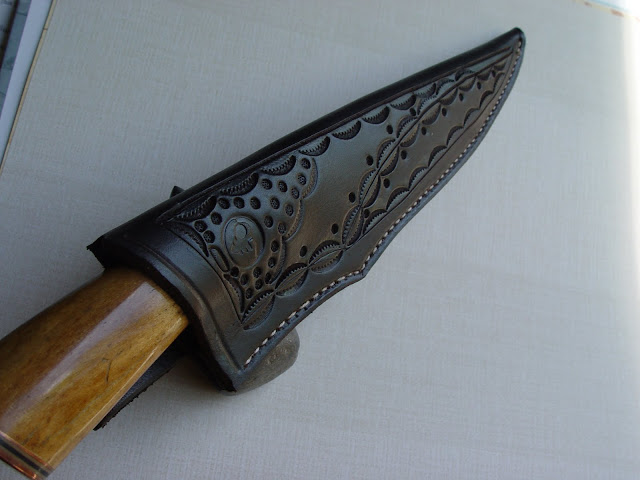Greg, I disagree to an extent. Guild admissions tests and the like place a lot of emphasis on symmetry, but I think that has more to do with seeing if the applicant can keep their grinds straight and their plunges even, than it does with pure functionality or beauty. Perfectly symmetrical knife handles feel like a broom-stick in hand, you can't tell which way the blade is facing. The very best knife handles are built specifically for the user's dominant hand, and you can tell as soon as you pick one up if it was made for a righty or a lefty, and exactly where the edge is. (often referred to as "indexing") Why else would stag crowns be so popular as handles? Not just because they're pretty, because they're shaped so that when you grab one, it leads your hand into using the knife.
While symmetry is hugely important when grinding most blades (a functional object that's meant to cut cleanly) or when leading rats down a path (an exercise in providing the quickest route), and overall symmetry is often pleasing to the eye, slight asymmetry is generally preferable when it comes to pure aesthetic appeal.
A perfectly square house with its door perfectly centered looks clunky and unnatural; so do two perfectly aligned pins on a typical knife handle. Raising one or both pins slightly above the centerline and/or spacing them just a bit off-center lengthwise adds visual interest without disrupting the flow of the piece.
Ever see one of those pics where they split a beautiful woman's face right down the middle and mirror either of the two halves? It looks downright creepy.
I think it comes back to the fact that nothing in nature is perfectly symmetrical or even straight. Even a color-blind child can find a lost arrow (straight) in a bush (wiggly) if you ask them to look for something that's out-of-place. It sticks out like a sore thumb.
Fred, in the case of that sheath, I think it's gorgeous. The "flow" is smooth and leads the eye up and down the object. There's plenty of interesting detail without it being too busy and distracting.



